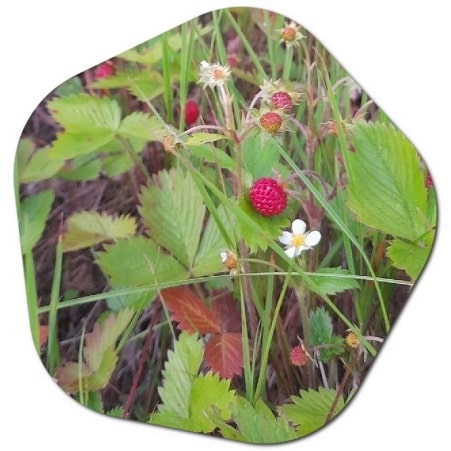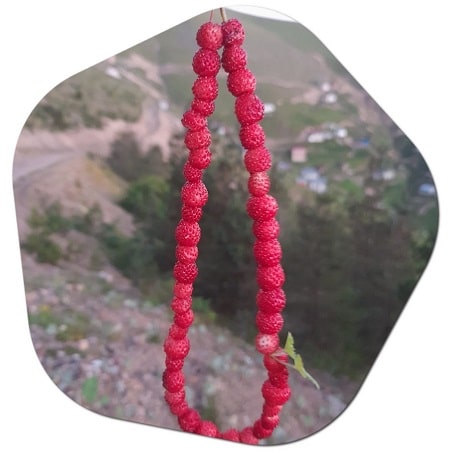Where do My strawberries grow in America?
Since strawberries are a heat-loving plant, they are mostly grown in the Mediterranean climate. Strawberries grow efficiently at temperatures of 20-25 degrees. It is important for its development that temperatures are 5-7 degrees lower at night.
It is possible to obtain high yields by planting strawberries in moist, deep, fertile, sandy-clay and drained soils. Alluvial humus soils also provide an ideal environment for strawberries. Calcareous soils are not suitable for strawberry planting. In addition, it is recommended that the pH value of the soil is lower than 6.5. OUTDOOR STRAWBERRY CULTIVATION IN AMERICA: Strawberries can be grown in cold conditions down to -10 oC. In colder regions, plants should be protected from frost by covering with materials such as straw and dry leaves. The most suitable soil for strawberry cultivation is drained, sandy-loamy and light soils.
What does strawberry need? It is important that the area where strawberries are planted gets sun. Seedlings that do not receive sunlight will be small and scorched, and the quality of the strawberries grown will be low. If strawberries are grown at home, they should be placed in sunny areas of gardens or balconies. If the soil is rich in nitrogen, the strawberries will be more productive.Under which climatic conditions does strawberry grow? In strawberry cultivation in Turkey, strawberries can be grown in all seasons in regions with temperate climates. Strawberry cultivation is also practiced in the continental climate in strawberry cultivation thanks to harvesting crops in the summer months. Strawberries are grown in various regions across America, as they can be cultivated in different climates and growing conditions. Here are some notable regions known for strawberry production in the United States:
- California: California is the largest strawberry-producing state in the country, known for its mild coastal climate that is conducive to strawberry cultivation. Regions like the Central Coast, particularly around Watsonville and Salinas, as well as the southern part of the state, including the Oxnard and Santa Maria areas, are major strawberry-growing areas.
- Florida: Florida is another significant strawberry-producing state, particularly during the winter months. Areas like Plant City, which is often referred to as the “Winter Strawberry Capital of the World,” and the surrounding region in central Florida are known for their strawberry production.
- Oregon: Oregon is known for its high-quality strawberries, primarily grown in the Willamette Valley. The cool and temperate climate of the region, along with the fertile soil, provides favorable conditions for strawberry cultivation.
- North Carolina: North Carolina is a prominent strawberry-growing state in the southeastern region of the United States. The state’s climate, particularly in areas like the Piedmont and coastal plain, allows for successful strawberry production.
- Michigan: Michigan has a significant strawberry industry, with many growers concentrated in the western part of the state. The cool climate and sandy soils make it suitable for strawberry cultivation.
- New York: Various regions in New York, such as the Hudson Valley, Finger Lakes, and parts of Long Island, have thriving strawberry industries. The state’s climate and fertile soils contribute to successful strawberry production.

These are just a few examples of strawberry-growing regions in America. However, strawberries can be grown in many other states across the country, depending on the specific climate, soil conditions, and the availability of suitable growing practices.
Information about May strawberries grown in America
What month is Strawberries in America? Strawberry consumption starts in April and continues until June. Today, these fruits can be found and consumed every month of the year. You can consume strawberries, which can be seen in many stalls during the winter months, in its most delicious form in April, May and June. “May strawberries” typically refers to strawberries that are harvested or come into season during the month of May. The availability of strawberries can vary depending on the climate and growing conditions of a particular region. Here are some general aspects regarding May strawberries:
Seasonality: In many regions with temperate climates, May marks the beginning of the strawberry season, with strawberries becoming available for harvest. The exact timing may vary depending on the specific location and growing practices.
Freshness and Flavor: May strawberries are often known for their freshness and vibrant flavor. Strawberries harvested during their peak season tend to have a sweeter taste, juicier texture, and a more pronounced strawberry aroma.
Availability: May strawberries are commonly found in farmers markets, grocery stores, and fruit stands during this time. The availability may vary depending on the region and local growing conditions.
Local Sourcing: May is a great time to source strawberries locally, as many regions have their own strawberry farms or pick-your-own farms where you can enjoy the experience of harvesting strawberries directly from the fields.
Uses: May strawberries are versatile and can be enjoyed in various ways. They are often eaten fresh, added to fruit salads, used in desserts like strawberry shortcake or pies, incorporated into smoothies, or preserved for later use in jams, jellies, or frozen for future consumption.
It’s important to note that the specific characteristics and availability of May strawberries can vary depending on the region, local climate, and farming practices. For accurate and up-to-date information on the availability of May strawberries in your area, it’s best to consult local farmers or visit local farmers markets or farm stands.
Where do wild garden May strawberries grow in America?
Wild garden strawberries, also known as woodland strawberries or alpine strawberries (Fragaria vesca), are native to Europe and Asia but have naturalized in various parts of North America. They are often found growing in wild or semi-wild environments, including forests, meadows, and open grassy areas. In the United States, wild garden strawberries can be found in several regions:
Eastern North America: Wild garden strawberries can be found in the eastern part of the United States, including states like Maine, New Hampshire, Vermont, New York, Pennsylvania, and parts of the Appalachian region. They thrive in the moist, wooded areas and forest edges.
Pacific Northwest: The Pacific Northwest, including parts of Oregon, Washington, and British Columbia, provides suitable conditions for wild garden strawberries. They can be found in woodlands, coastal areas, and mountainous regions.
Midwest: Wild garden strawberries can also be found in the Midwest states, such as Michigan, Wisconsin, and Minnesota. They can be seen growing in forested areas, prairies, and open fields.
Rocky Mountains: In the mountainous regions of the Rocky Mountains, including Colorado, Montana, and Wyoming, wild garden strawberries can be found growing in subalpine meadows and open spaces.
Northeastern United States: Wild garden strawberries can also be found in parts of the northeastern states, such as Massachusetts, Connecticut, and Rhode Island. They are often spotted in shaded woodlands and forested areas.

It’s important to note that the distribution and abundance of wild garden strawberries can vary within these regions. They are typically smaller in size compared to cultivated strawberries but are known for their intense flavor. When foraging for wild garden strawberries, make sure to properly identify them and be aware of any regulations or restrictions regarding wild plant collection in your area.
Can I grow May strawberries in my garden in America?
By following these guidelines and adapting them to your specific growing conditions, you can enjoy homegrown May strawberries in your garden in America. Where will my strawberries grow in America? >> Caring for May strawberries in pots in America? Growing May strawberries in pots is a popular option, especially for those with limited garden space or who want more control over the growing conditions. Here are some tips for caring for May strawberries in pots in America:
Pot Selection: Choose a pot or container that is at least 8-12 inches deep and wide enough to accommodate multiple strawberry plants. Ensure the pot has drainage holes to prevent waterlogging.
Soil and Planting: Use a well-draining potting mix specifically formulated for containers. Avoid using garden soil, as it may become compacted and hinder drainage. Plant your strawberry plants at the same depth they were growing in their nursery containers, leaving the crown (where the leaves emerge) above the soil surface.
Sunlight: Place your strawberry pots in a location that receives at least six to eight hours of direct sunlight each day. If you have limited sun exposure, consider moving the pots around to maximize their sunlight exposure.
Watering: Strawberries in pots require regular watering to keep the soil consistently moist. However, avoid overwatering, as excessive moisture can lead to root rot. Water the plants when the top inch of soil feels dry, and ensure proper drainage to prevent water accumulation in the pot.
Fertilization: Provide balanced nutrition to your strawberry plants by applying a slow-release or liquid fertilizer formulated for strawberries. Follow the package instructions for the appropriate application rate and frequency. Avoid over-fertilizing, as it can lead to excessive vegetative growth at the expense of fruit production.
Mulching: Mulch the surface of the potting soil with straw or another organic mulch. This helps retain moisture, suppress weeds, and protect the strawberries from direct contact with the soil, reducing the risk of disease.
Pollination: Strawberries require pollination for fruit set. If you are growing strawberries indoors or in a location without natural pollinators, consider hand-pollinating the flowers using a small brush or gently shaking the plants to facilitate pollination.
Pests and Diseases: Monitor your potted strawberries for pests such as aphids, slugs, or snails. Inspect the plants regularly and take appropriate pest control measures if needed. Keep an eye out for common strawberry diseases like powdery mildew or gray mold and address them promptly.
Runners: Strawberries naturally produce runners, which are long, horizontal stems that produce new plants. You can either allow these runners to root and form new plants in the same pot or trim them off to maintain a compact growth habit.
Harvesting: Once the strawberries are fully ripe and red, harvest them by gently twisting and pulling them from the plants. Regularly check your plants for ripe fruit, as strawberries tend to ripen quickly.
By providing proper care, adequate sunlight, and regular watering and fertilization, you can enjoy a bountiful harvest of May strawberries in pots in America. Where in America do my strawberries grow? >> Strawberries in summer or winter? Strawberry, one of the fruits with the highest folic acid content, is a very popular type of fruit that can be found from the spring months until the beginning of summer.





